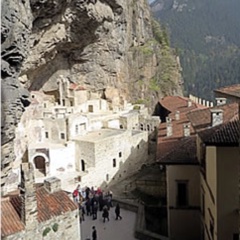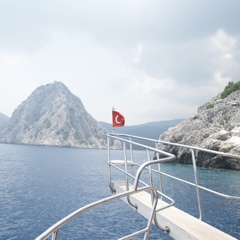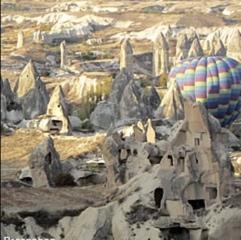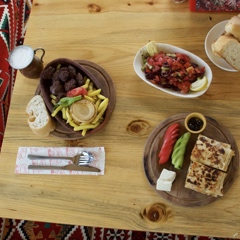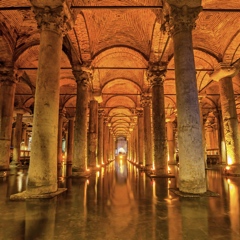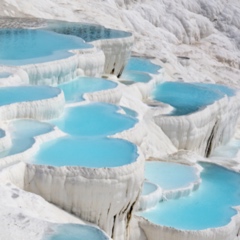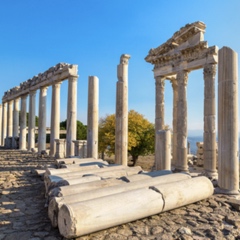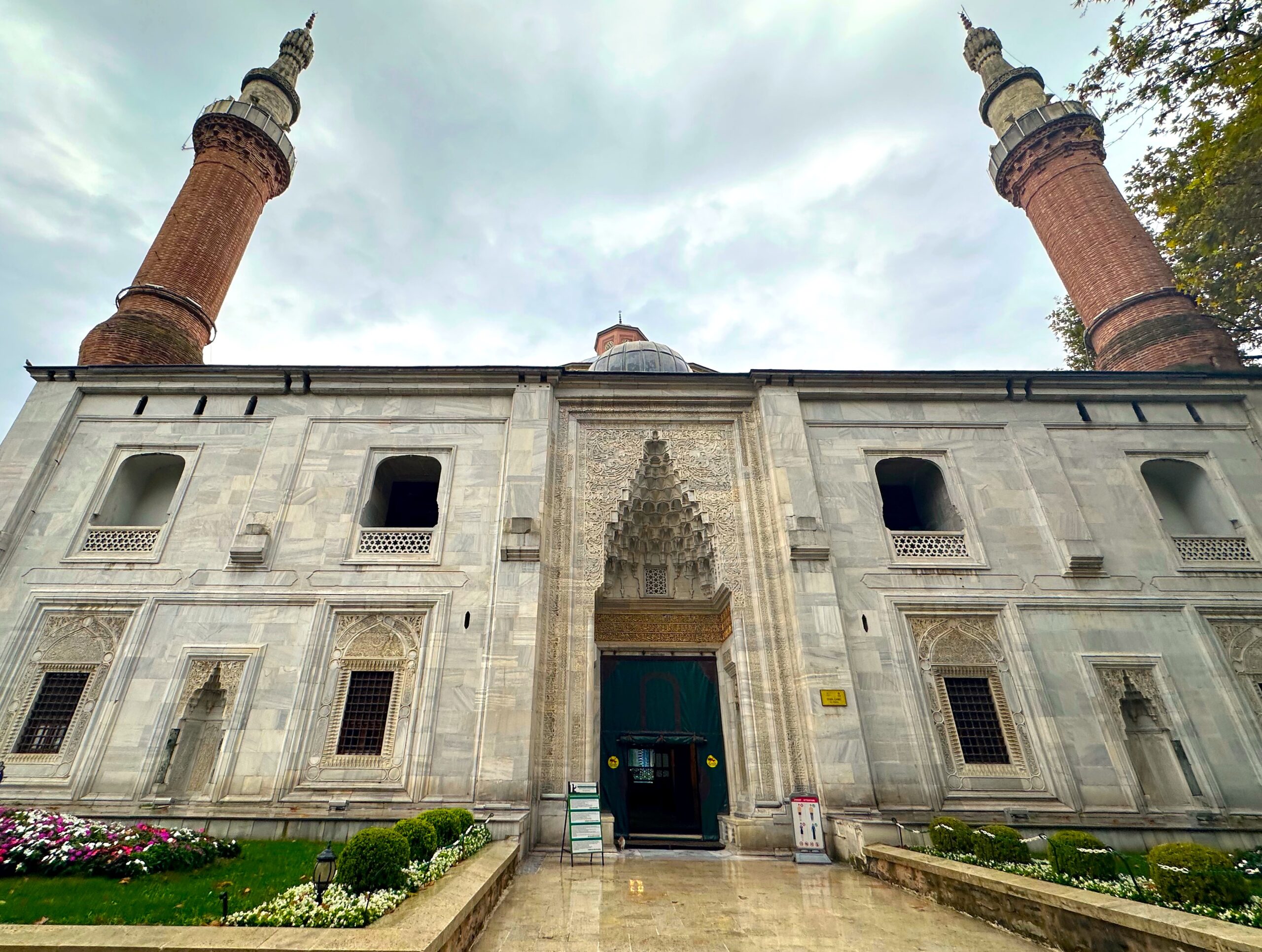
Come to Bursa, due south of Istanbul across the Sea of Marmara (map), for its beautiful mosques and other early Ottoman architecture, its silk-filled bazaars, its thermal spa baths, and delicious kebab.
Bursa was the first capital of the Ottoman Empire. The two founding sultans, Orhan and Osman, are buried here, where the empire's great architectural style was first developed.
The city clings to the slopes of Uludağ, the Bithynian Mount Olympus, and thus got its nickname Green Bursa from the surrounding forests. Now a large, bustling city of nearly 3 million people, much of the greenery has disappeared beneath the concrete and macadam urban sprawl. Bursa's traditional industries of silk weaving and fruit processing have long since been supplemented by motor vehicle manufacturing (it's “Turkey's Detroit”) and other industries, large and small.
Top Sights in Bursa
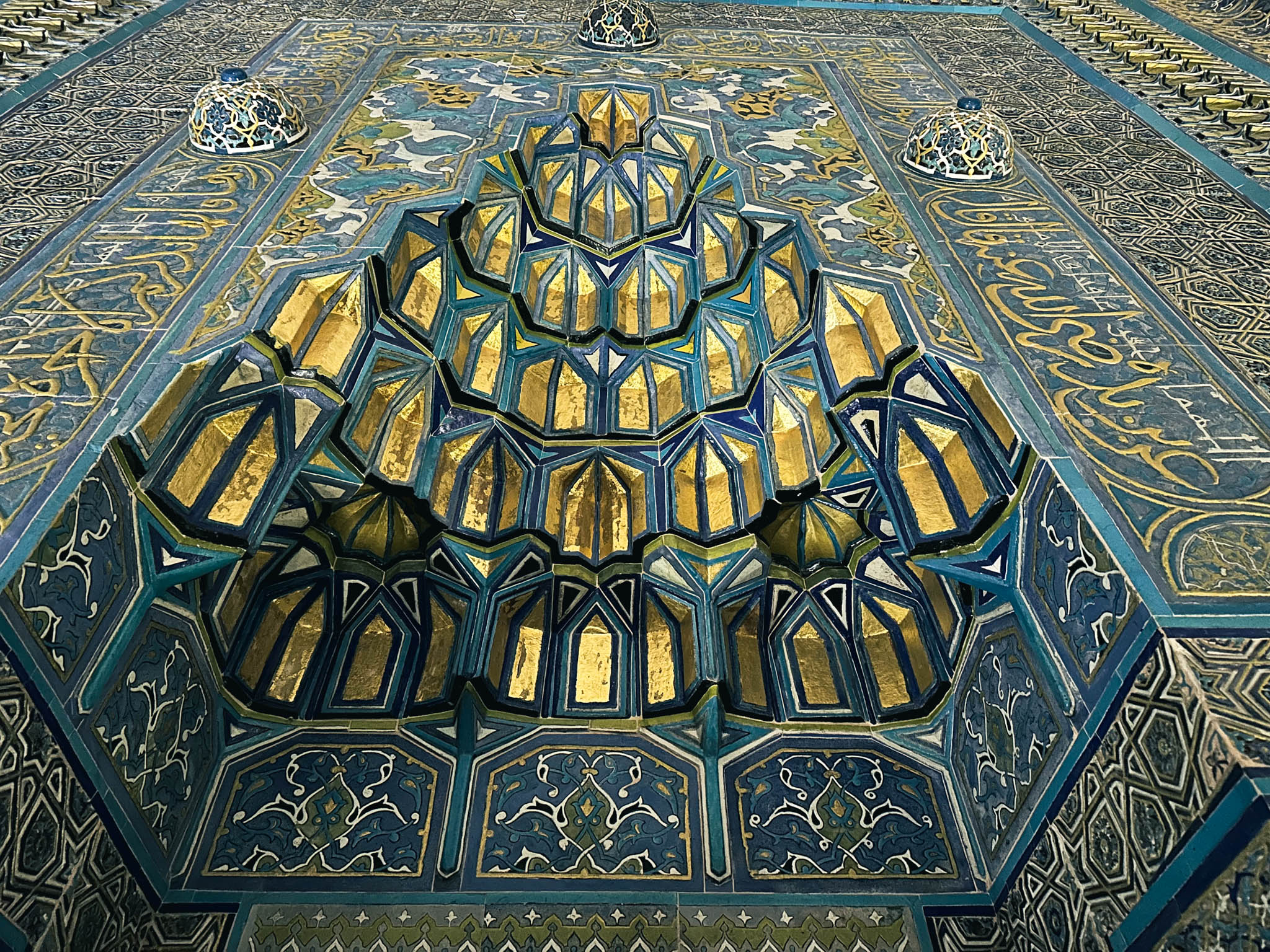
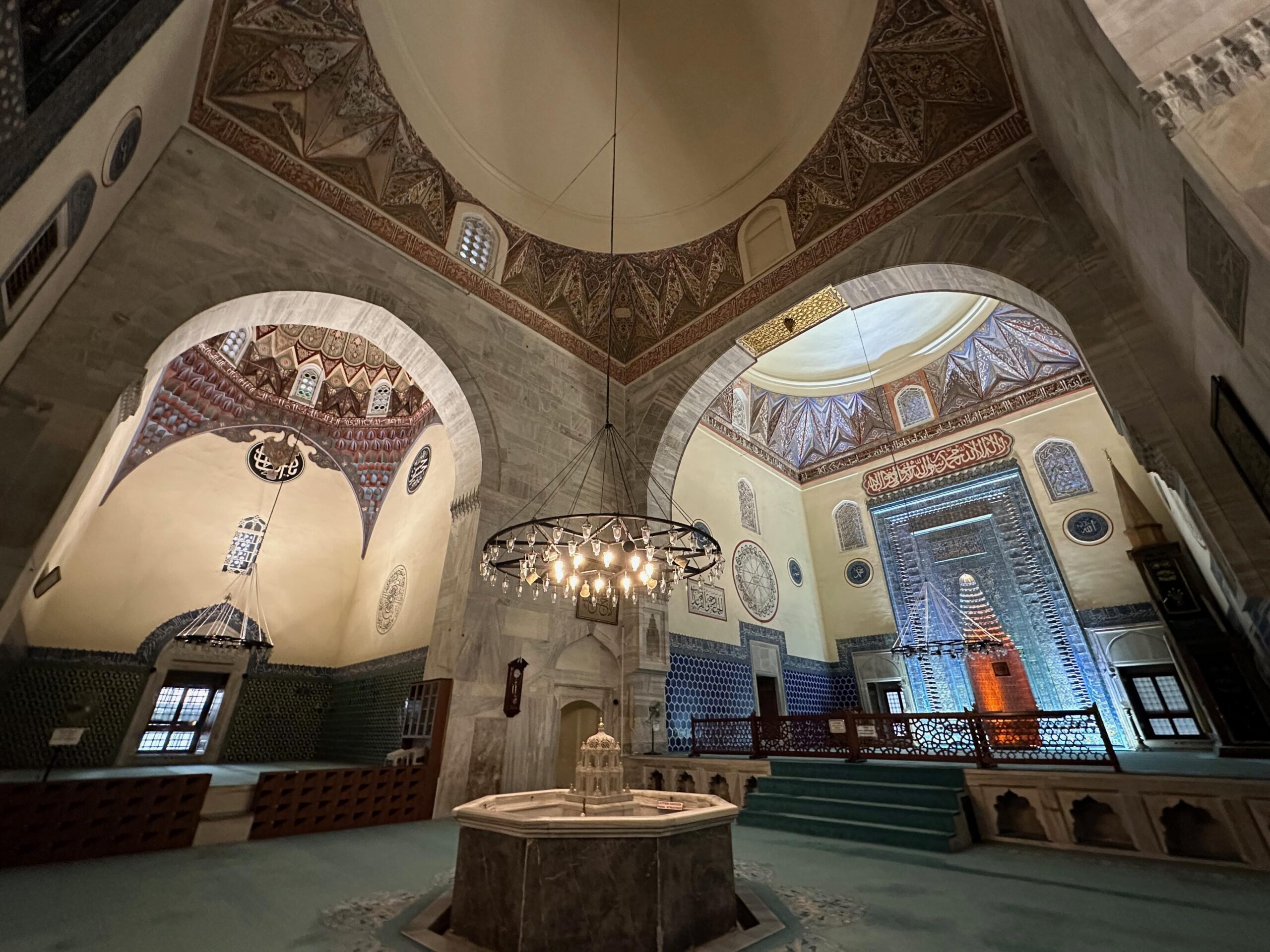
Yeşil Cami (Green Mosque)
Bursa's Green Mosque and nearby Green Tomb are modest but intricately designed. The Green Mosque has beautiful turquoise tiles and an intricate mihrab, which is a niche in the wall that shows the direction of Mecca. The mosque features a sultan’s loge, a domed central hall, and rooms used for prayer and Ottoman governmental affairs.
Adjacent to the mosque is the Green Tomb (Yeşil Türbe), an octagonal structure adorned with blue tiles, housing the cenotaphs of Sultan Mehmet I and his family. Nearby, the Turkish & Islamic Arts Museum, located in the mosque's historic medrese, offers a glimpse into historical art and objects. The complex is also in proximity to the Emir Sultan Mosque and is within a short walking distance or bus ride from the center of Bursa. This mosque, with its rich history and architectural significance, is a key landmark in the city, reflecting the evolution of Islamic architecture in Turkey.
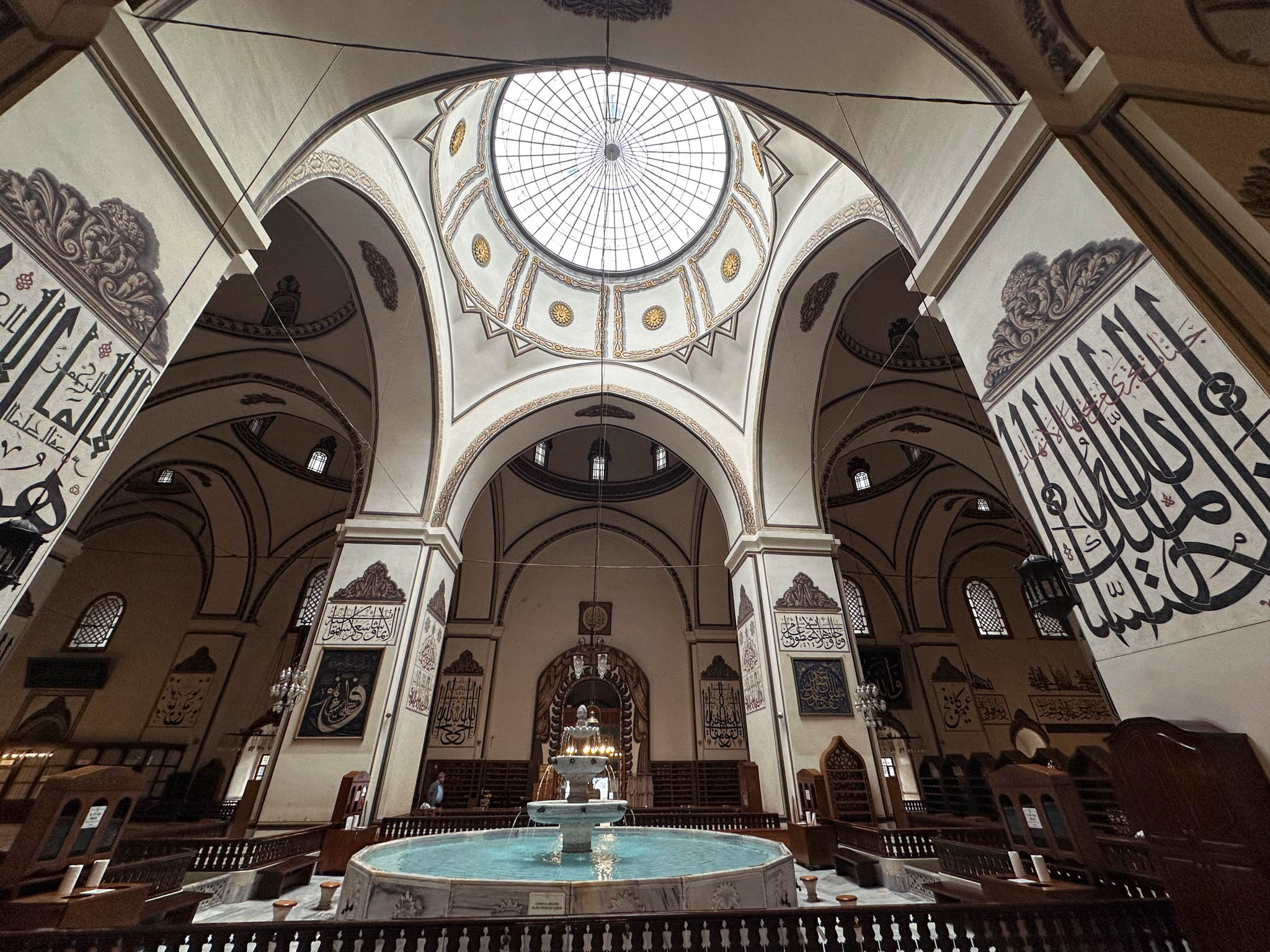
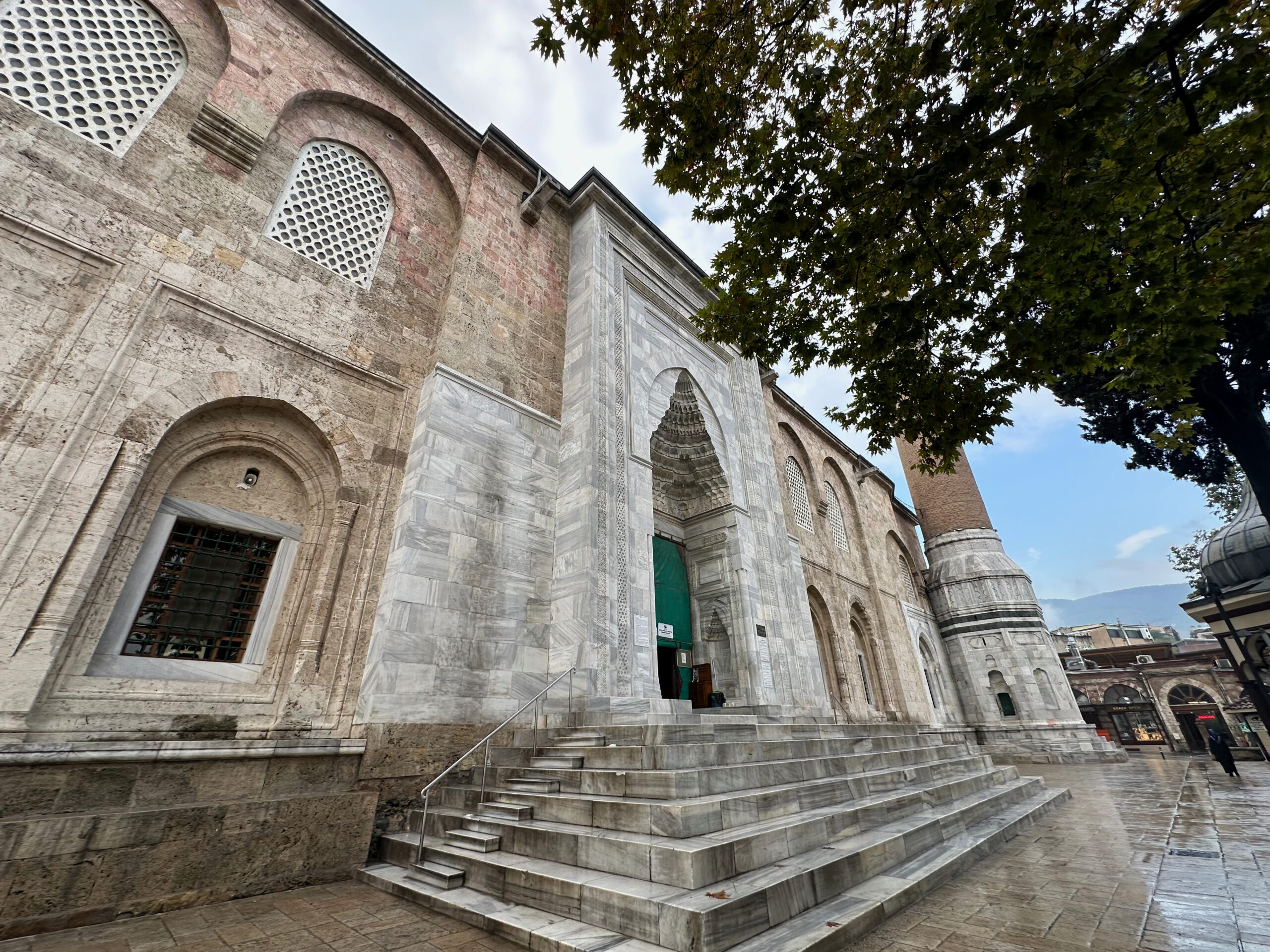
Bursa's Ulu Cami (Great Mosque), a prominent example of early Seljuk Turkish architecture, stands majestically at the western end of Atatürk Caddesi in the city center. This grand mosque was built between 1396 and 1399 under Sultan Yıldırım Beyazıt, this mosque is a large stone structure topped with 20 domes. Its exterior simplicity contrasts with a grand interior, featuring a forest of square columns supporting arches and domes, and a central glass-covered opening that illuminates the vast prayer hall.
The mosque's design, both simple and spacious, accommodates thousands of worshippers, making it a significant place for prayer and a serene space for visitors to appreciate its architectural beauty. Visitors are welcome, though it's advisable to avoid prayer times for a more respectful experience.
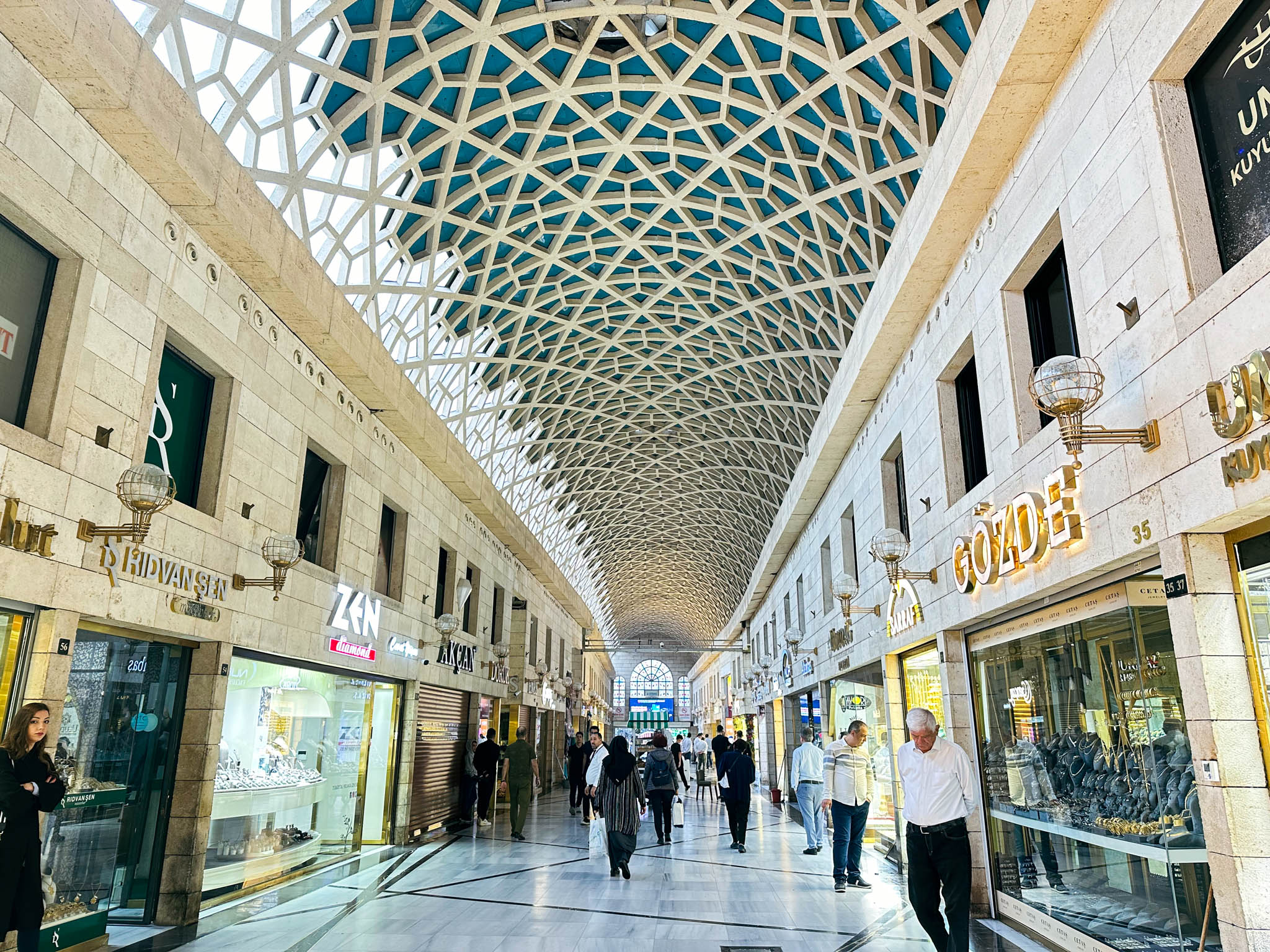
Koza Han & Kapalı Çarşı
Bursa's Covered Market (Kapalı Çarşı), while smaller than Istanbul's grand bazaar, serves as the heart of a larger bazaar district in Bursa. Located near the Great Mosque (Ulu Cami), this market area is not only a shopping destination but also a historical exploration site. It features several notable hans (caravanserais) such as the İpek (Silk) Han, Koza (Cocoon) Han.
This two-story caravanserai is ideal for buying souvenirs. Once situated along the Silk Road, you can find many stalls selling silk (ipek) in Bursa. The covered market (Kapalı Çarşı) has stalls selling bags, jewelry, and souvenirs. Keep in mind when you are shopping that 'ipeksi' ("silky") is not real silk.


Muradiye Complex
The Muradiye Complex is a historically rich site that includes the Muradiye Mosque, built in 1426 under Sultan Murat II. This complex is not just a religious site but also includes a medieval health center, an Ottoman-style restaurant, a historic Turkish bath, and two Ottoman houses now serving as museums. The Muradiye Mosque, similar in style to Bursa's Green Mosque, is particularly notable for its garden filled with a dozen domed tombs, each telling the tumultuous history of the early Ottoman Empire and its succession struggles.
Among these tombs, the most significant is the Tomb of Murat II, with its unique design allowing rain to fall directly onto the sultan's grave, and the Tomb of Prince Cem, the youngest son of Sultan Mehmet II, who became a political pawn in Europe. Another poignant site is the Tomb of Prince Mustafa, son of Sultan Süleyman the Magnificent, renowned for its exquisite İznik tiles and the tragic story of Mustafa's unjust execution. The complex also includes the 17th-century Ottoman House Museum and the operational Murat II Hamam, offering a glimpse into Ottoman architecture and daily life.

Osman Gazi Tomb
As the former Ottoman capital, Bursa has many tombs of Ottoman sultans. Located in the city centre within Tophane Park, Osman Gazi and his son Orhan Gazi both have tombs here. Osman Gazi was the Ottoman sultan who founded the Ottoman Empire. His son Orhan Gazi, would go on to capture Bursa in 1326, making it the first Ottoman capital (Constantinople, or Istanbul, was not taken until 1453).
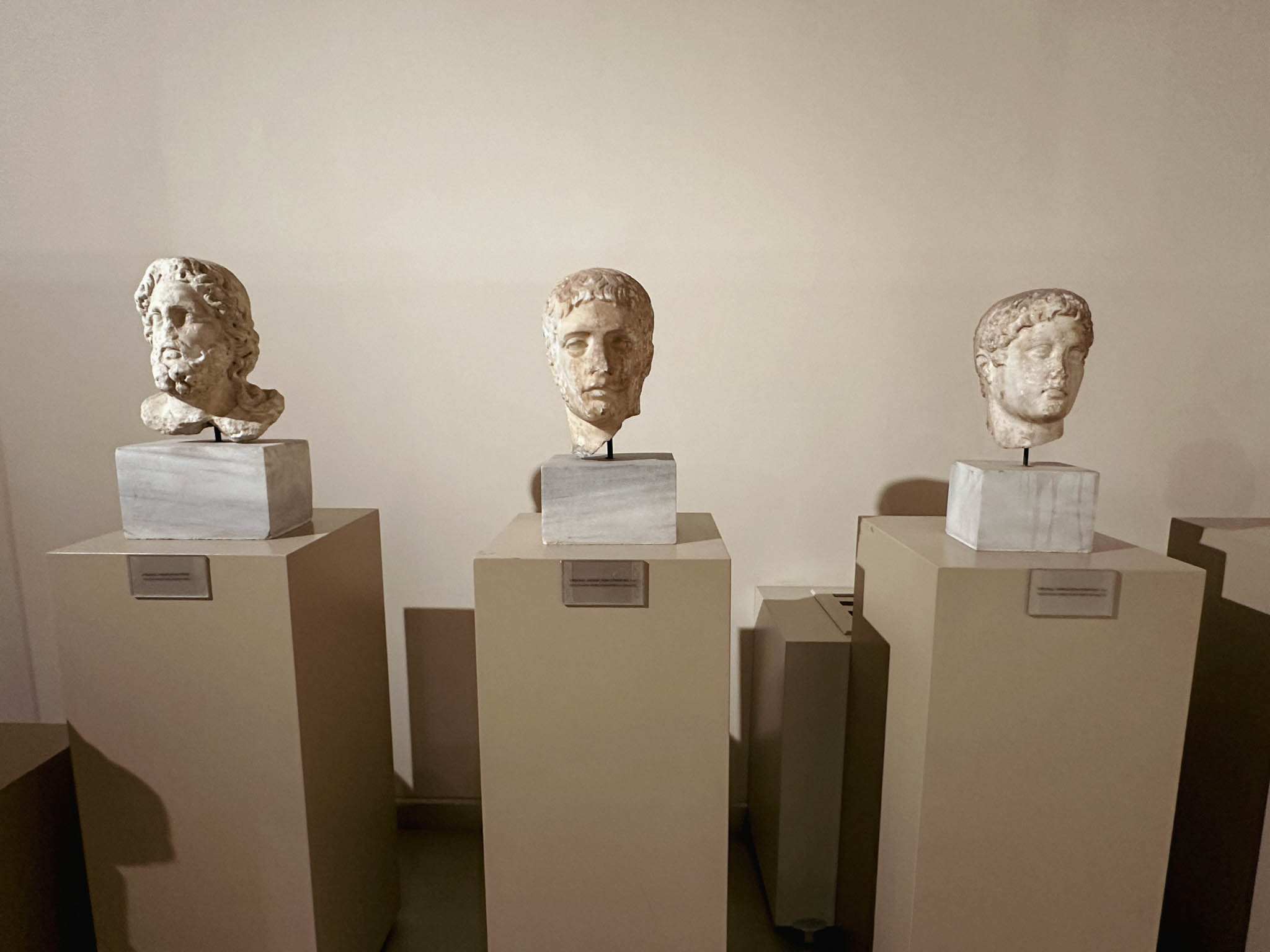
Museums
Bursa is home to several museums that showcase its rich history and cultural heritage. The Bursa City Museum offers insights into the city's past, from its founding to its modern development. The Turkish and Islamic Arts Museum displays a collection of artifacts that highlight the artistic achievements of the Ottoman era.
The Bursa Archaeology Museum is another must-visit, featuring relics from the Byzantine (Eastern Roman Empire) and Ottoman periods, including ceramics, coins, and sculptures. The Panorama 1326 Bursa Conquest Museum is a relatively new museum that features a large dome showing the departure of the Byzantines along with the arrival of the Ottomans and many scenes of daily life.

Lodging
Bursa offers a variety of accommodation options, catering to different tastes and budgets. For those interested in historical sites and city life, staying in Central Bursa is ideal. This area provides easy access to major attractions like Ulu Cami and Koza Han.
On Bursa's western outskirts is Çekirge, a thermal spa resort since Roman times, with many spa hotels and bathing establishments. Nilüfer, a modern district, presents mid-range and budget-friendly options, ideal for travelers seeking affordability without sacrificing comfort.
For nature enthusiasts or ski lovers, Uludağ is the perfect choice, with hotels offering ski facilities and access to mountain trails.
Transportation
Bursa is easily accessible from Istanbul, as are many of its nearby destinations. Fast catamaran ferryboat (hızlı feribot) routes take you from Istanbul to Güzelyalı, Mudanya, or Yalova on the southern shore of the Sea of Marmara (map).
From Güzelyalı or Mudanya you can get to Bursa by bus and Bursaray (Metro). From Yalova, take a bus to Bursa, or a minibus to İznik. After touring İznik, you can catch a minibus onward to Bursa.
Within Bursa, the public transportation system is well-developed, featuring the BursaRay light rail, buses, minibusses, and taxis. BursaRay connects key areas like Kültürpark, Osmangazi, and Şehreküstü, while buses offer extensive coverage across the city, though they can get crowded during rush hour.
Cuisine
Bursa is well-known for its Iskender kebap (kebab). This mouth-watering delicacy consists of thinly sliced grilled lamb or beef, served over pieces of pita bread, topped with tomato sauce, and a generous drizzle of melted butter poured on top. Yogurt on the side complements the rich flavors.
Apart from Iskender kebap, Bursa offers a variety of other Turkish specialties, such as candied chestnuts (kestane şekeri) which are a local favorite, also reflecting the city's history in fruit processing.
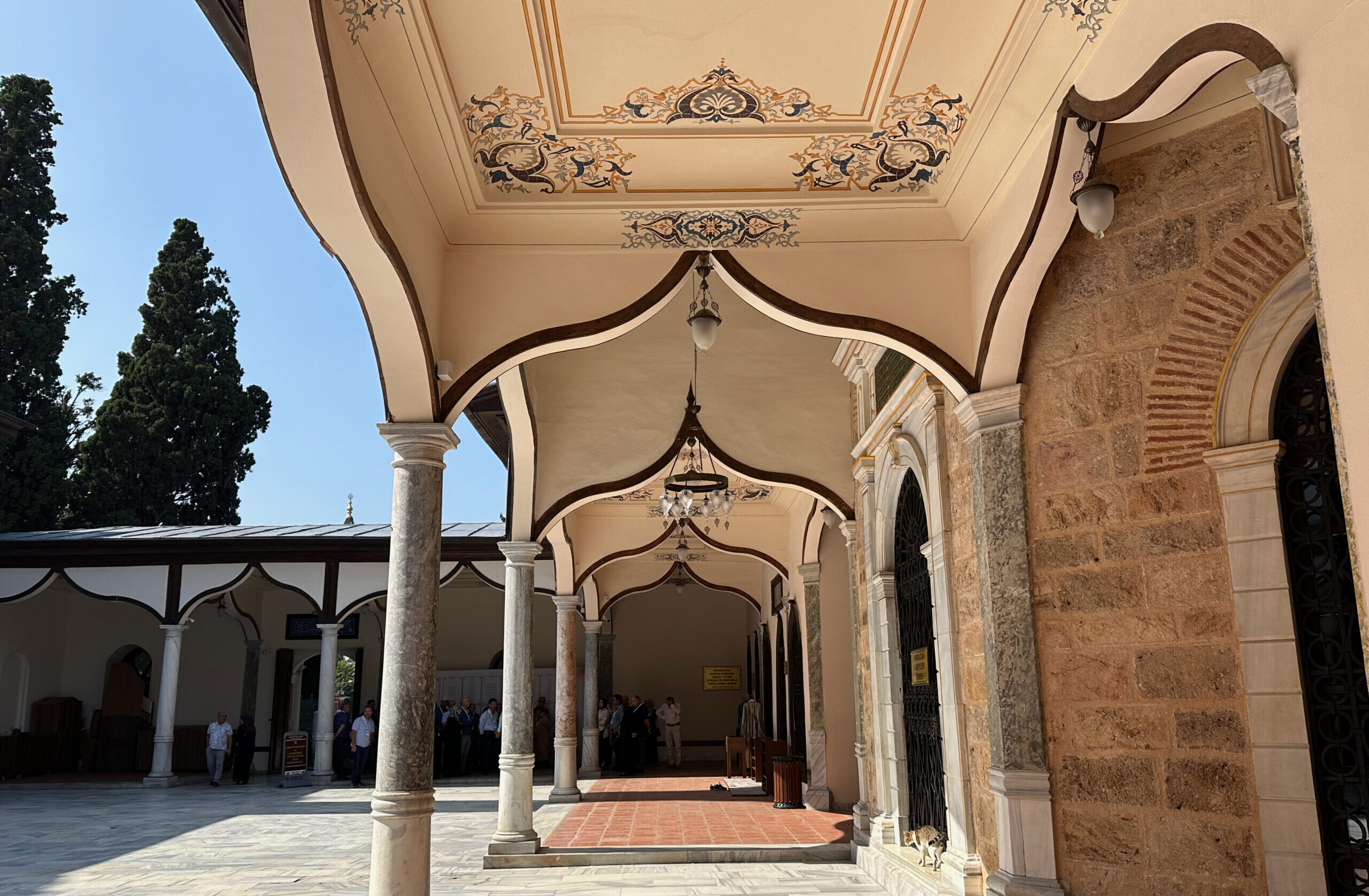
Top Experiences
Eat Iskender Kebap
Some people come for İskender kebap, slices of grilled lamb dressed with savory tomato sauce and browned butter. There are numerous places to eat Iskender kebap, which takes its name after its inventor, Iskender Efendi. Our personal favorite is İskender Efendi Konağı, located next to the Botanical Park, where you can enjoy not only amazing food but also dining in a historical building surrounded by greenery.
Soak in a Thermal Bath
Immerse yourself in the healing waters of Bursa's thermal baths. The district of Çekirge is renowned for its luxurious spa hotels, where you can indulge in a rejuvenating thermal bath. These natural hot springs, rich in minerals, are believed to have therapeutic properties.
Shop for Silk
Bursa was once a major stop on the Silk Road and is known for its silk trade history. Explore the Koza Han, a historic caravanserai, where you can find silk scarves and other handcrafted items.
Discover Ottoman History
Bursa served as the capital city of the Ottoman Empire, and as such, has many remnants of the Ottoman era, including tombs of bygone sultans and their families. The city's historical significance as the first capital of the Ottomans is evident in its architectural landmarks. Visit the tombs of Osman Gazi and Orhan Gazi, the empire's founders, and visit Ulu Cami, a symbol of early Ottoman architecture.
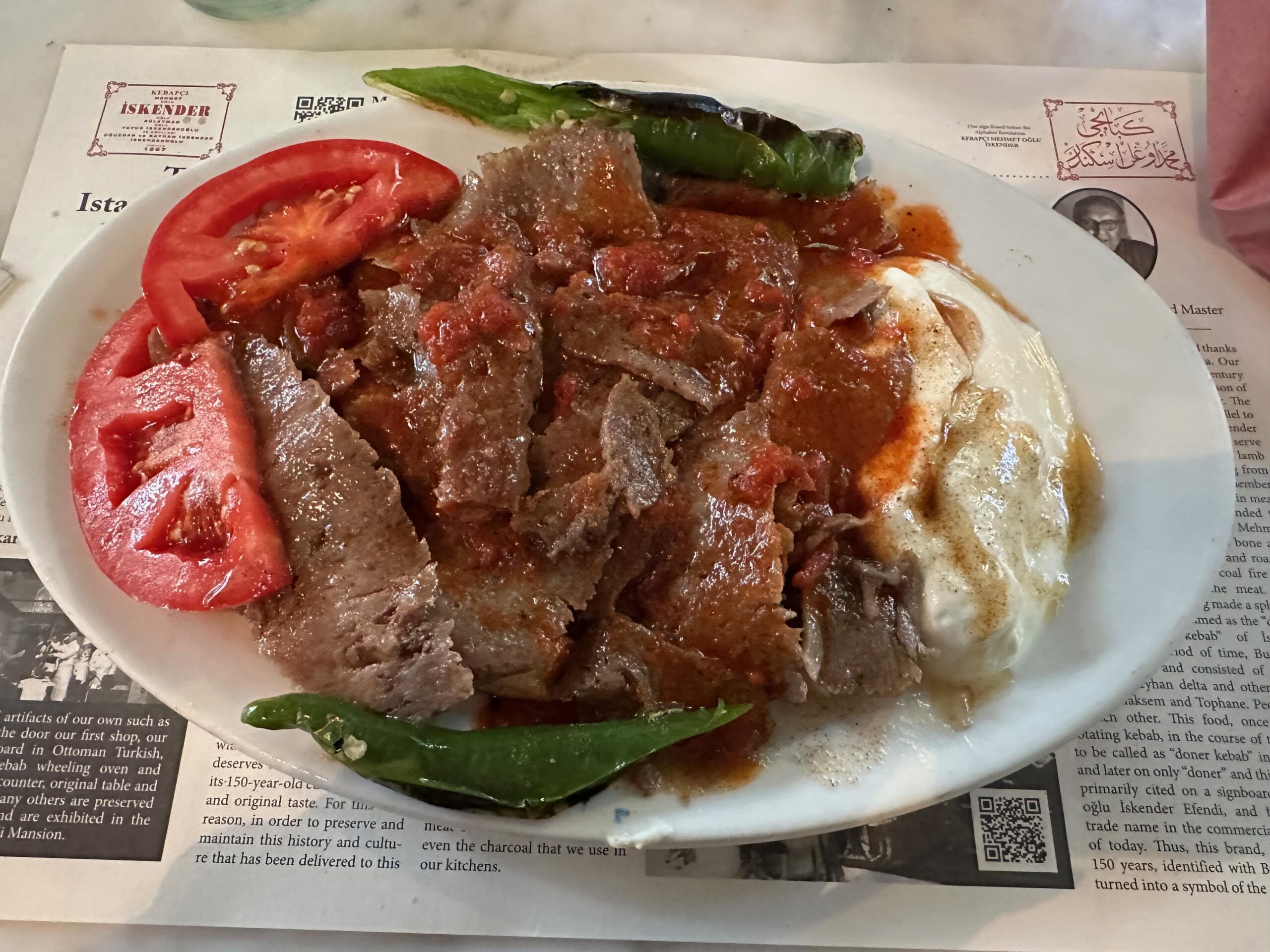
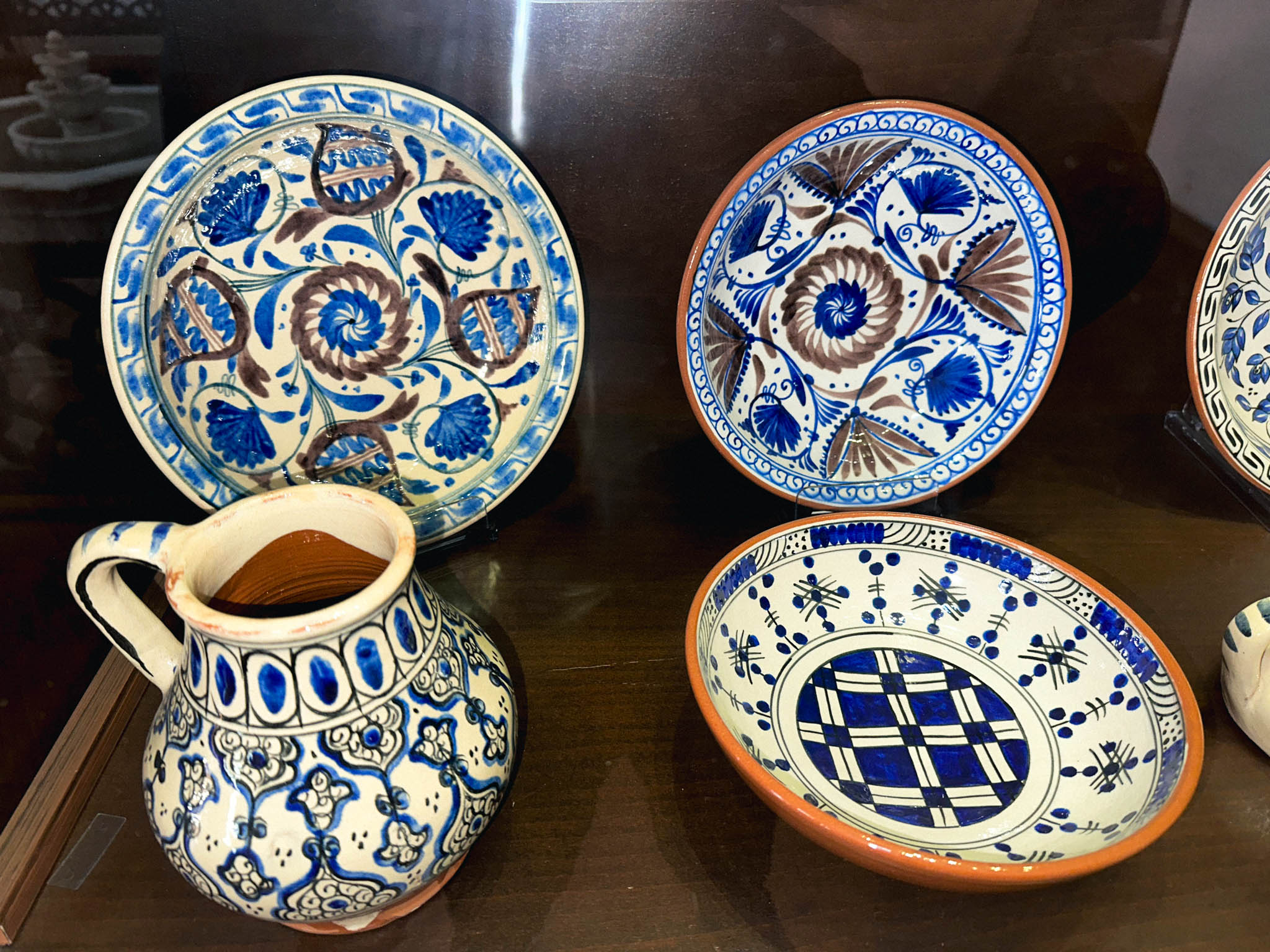
Tours & Excursions
You can visit Bursa to see the top sights on a day-trip excursion from Istanbul, although an overnight in Bursa is more comfortable and rewarding. That way you can also see the ancient town of İznik (Nicaea) on the way to Bursa, and you may even have time to go to the top of Uludağ (OO-loo-dah, 2543 meters, 8343 feet), the mountain behind the city.
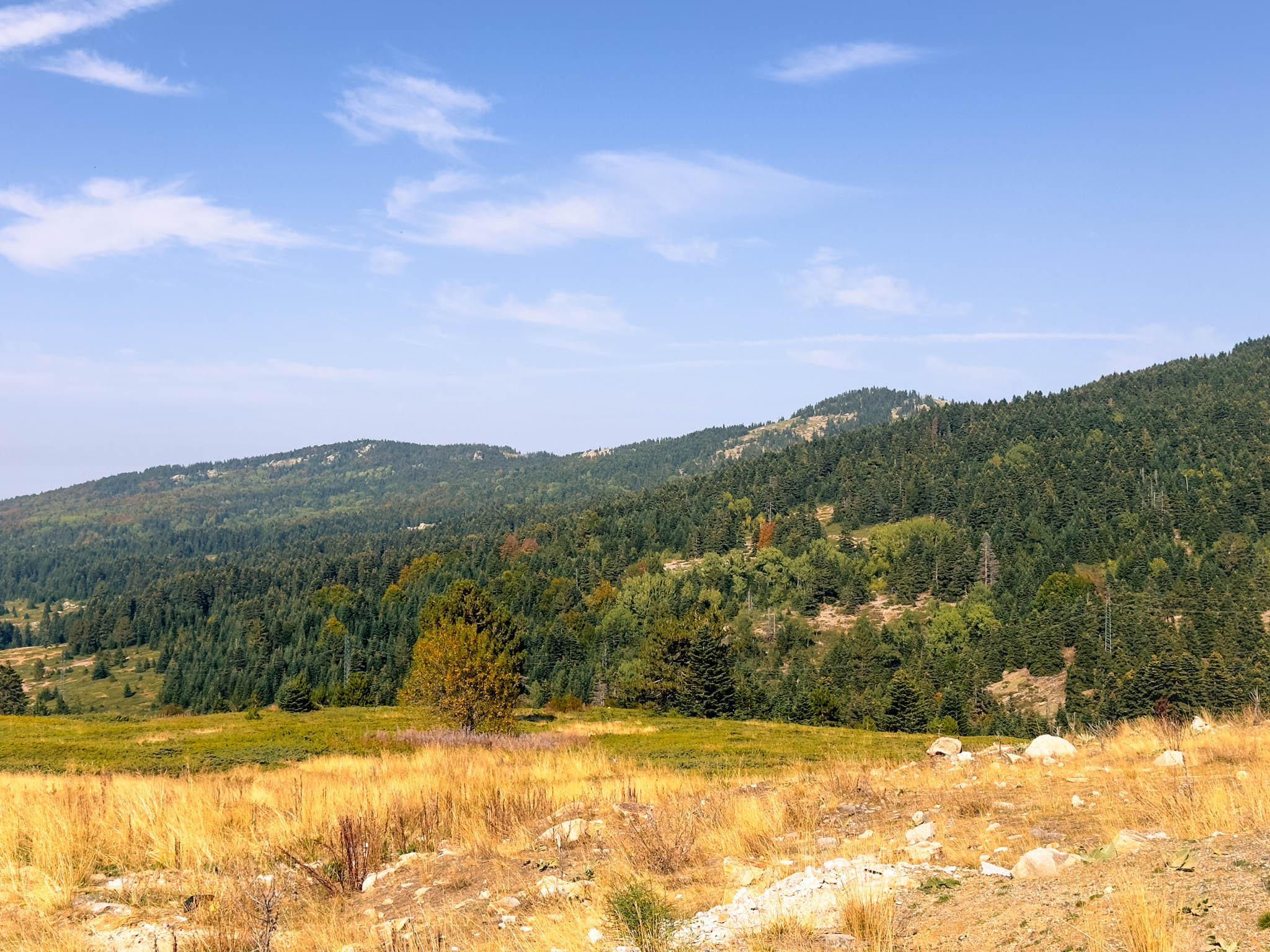
Yalova
A coastal city in northwestern Turkey, Yalova is synonymous with scenic landscapes and healing hot springs. Positioned between the Marmara Sea and green mountains, it's a peaceful alternative to the busy city life. The city's thermal baths, known for their mineral-rich waters, have been attracting visitors for relaxation for many years. Yalova's lively waterfront, filled with cafes and restaurants, is perfect for relaxed walks and dining with a view. The city also acts as a starting point to explore the nearby Yalova Waterfall, a natural attraction surrounded by forests, popular among those who enjoy nature and quiet spots.
Mudanya
Mudanya blends historical significance with natural beauty. It's known for its attractive seafront and old buildings. The town mixes its historical past with modern-day leisure, featuring restored Ottoman houses, vibrant seafront walks, and seafood restaurants. Mudanya offers a unique experience for visitors interested in history, culture, and seaside relaxation.
Uludağ (Mountain)
Uludağ, also known as the "Great Mountain" or the Mount Olympus of ancient Bithynia, is a prominent natural landmark located south of the historic center of Bursa, Turkey. Rising to a height of 2,543 meters (8,343 feet), Uludağ is a popular destination for both summer and winter activities. In the summer, it offers hiking opportunities and a respite with its fresh, cool air, while in the winter, it transforms into a skiing haven. Enjoy a ride to the summer by a teleferik (cable car) from the city center.
A trip to Uludağ typically requires at least three to four hours, accounting for the cable car ride, waiting times, and exploration at the top. The cable car journey itself takes about 30 minutes and offers panoramic views, especially from the rear of the car. For those driving, tire chains are mandatory from December to early April due to snow and ice conditions. This mountain offers a diverse range of winter sports and breathtaking scenery, making it a must-visit destination in the surrounding region.
Iznik
Ancient Nicaea, now known as İznik, is a historic farming town in Turkey, notable for its massive medieval walls and picturesque setting on the shore of a large lake, 63 km (39 miles) southeast of Yalova. This town has been a significant site for Christianity, hosting two ecumenical councils, the first in 325 AD and the seventh in 787 AD. The Hagia Sophia Church, located in the city center, was the venue for the seventh council. In 1331, Orhan Gazi converted this church into a mosque, and later, during the reign of Sultan Süleyman the Magnificent, the renowned architect Mimar Sinan made additions and modifications to enhance its function as a mosque. Iznik is known for its contributions to Turkish Islamic art in the form of ornate tiles.
Cumalıkızık
Cumalıkızık, a village in the province of Bursa, Turkey, is a remarkable example of Ottoman rural architecture and lifestyle. This UNESCO World Heritage Site is celebrated for its well-preserved Ottoman-era houses and narrow, cobblestone streets. Cumalıkızık is particularly famous for its Sunday market, where locals sell a variety of homemade products, from traditional Turkish breakfast items to handcraft souvenirs.
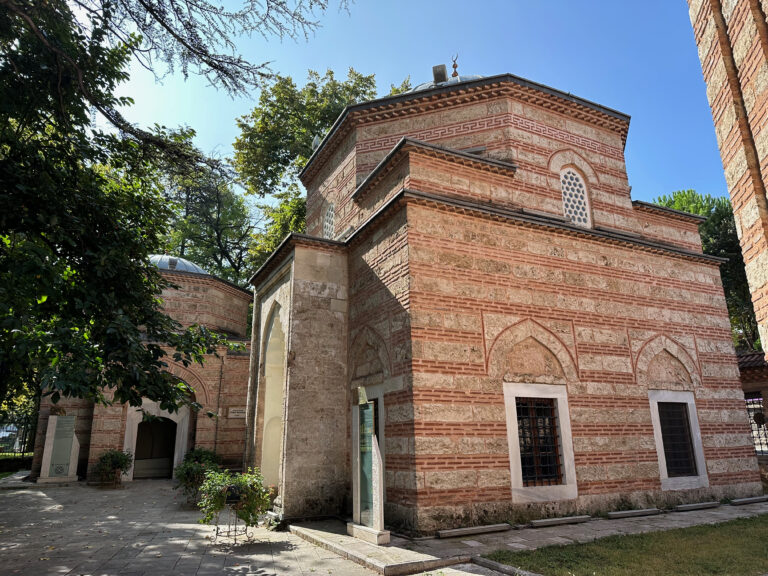
Discover Bursa
Bursa, a city where history and modernity intertwine, offers a unique travel experience. From exploring ancient mosques and meandering along its covered bazaar, Bursa is a notable city worth visiting. Slightly off the beaten path of most tourists, this city provides an authentic experience.
Take some time to soak in a thermal bath, gaze up at the intricate calligraphy in Ulu Cami, and ski down the slopes of Uludağ. Of course, no trip to Bursa is complete without a steaming plate of Iskender kebab. Discover the history and charm of Bursa.
—by Tom Brosnahan, updated by Kimberly Price



